There’s a tendency to let our feelings towards final episodes guide our feelings towards a series in general. But in reality, endings are only one episode of many – in this case one of 22. And while the ending is generally the most important episode, it’s also the hardest to get right. And I’m not going to throw Shiki under the bus because it didn’t. I love this series anyway – it’s my pick for #2 show of 2010 (behind Sarai-ya-Goyou) and not even a disappointing finale can change that.
One hallmark of great writing is the ability to polarize the audience. You have to be able to get people interested enough to get really angry if you want to polarize, and that’s hard to do. And boy, did this show do it. Shiki vs. humans. Seishin, love or hate. Sunako, sympathy or no? Great ending or horrible cop-out? The opinions were strong with this one, and it isn’t surprising – the writing here is some of the best you’ll ever see on television.
I’ve said already that I find this show more like a Greek tragedy than anything else. Usually, as in a tragedy, the audience knew what was happening long before the characters on-screen did – the intensity of feeling comes from knowing, and being powerless to change it. But remarkably the series managed to maintain a hypertensive level of suspense almost throughout in spite of that. How? By always knowing just where to leave off an episode, for starters – making those weeks between episodes agonizing, and the horrific three-week hiatus in the middle even worse! As well, despite the tragic aspects Shiki still never lost the ability to shock – the episode where Toshio experimented on his wife a perfect example. It may have been the most powerful and disturbing episode of any anime this year, and it was all the more impacting in that it came at the end of string of incredibly bleak and depressing episodes for the humans – making it seem as if there was no hope for Sotoba altogether, it’s fate sealed.
That transition was artful – a deft sleight-of-hand where things changed and we were hardly aware of it. For a horror series things had become almost routine – but that was the downfall of the Shiki, who became fat, contented, complacent – and the hunted. And once the humans, driven to animal desperation and brutality by their dire situation, went on the offensive things really began to get ugly. We were shown the dark nature of their anger and fear, and this was when the split in the fan base really became apparent. I don’t see a moral equivalency between the two sides – but many did, and even rooted for the Shiki. Was this a cop-out by the writers? To some extent it was – but one that could have been a brilliant feint if the ending had proved more gutsy and decisive.
Fundamentally, this was the question that haunted the final episodes. Do you feel sorry for Sunako? Do you understand Seishin’s feelings? I was really hoping the show would take a stand on this in the end, but it didn’t – I won’t harp on it, since I harped plenty in my review of the last episode. But Seishin is a weak link – one of the few – in the series as a whole. If we were meant to feel some sympathy for him, it failed miserably – he was one of the most despicable characters in recent anime. A self-hating monk who hated the life that was forced on him, he tried to kill himself and failed and, lacking the courage to try again, decided that he would sacrifice his family and village instead through betrayal. Anything to get out of the life he hated. Toshio hated the life and responsibilities thrust on himself, too – but he ended up fighting to save the very village that weighed down his soul. He showed ruthless courage and loyalty while Seishin showed cowardice and betrayal. My opinions of these two men changed radically from my initial impressions. Toshio seemed utterly useless at first – “Dr. Obvious” – and he was symbolic of the entire village idling while it was being devoured from within. But when he turned, he turned hard.
Running parallel to all this are the side stories – the kids, starting with Megumi, the angry teen who found her true calling as a sadistic ghoul and met the grisly fate she had coming. Natsuno, who also rebelled against village life but chose not to fight his death at the hands of his best friend Tohru but meekly accept it – only to rise as a Jinrou and be the vital cog that facilitated the comeback of the human side. Akira, one of only two characters who both had clean hands morally at the end and behaved with courage throughout and Kaori, his meek older sister. And then there was the heroine of the story for me, Ritusko-chan. She was the one who finally broke the cycle of death – she refused to kill to survive as a Shiki, choosing instead to starve herself despite the prodding of Tohro and Tatsumi. In her act of defiance she not only saved herself, but Tohru, too – a kind boy who never accepted the side of himself that would kill his beloved friend in order to survive, In a grisly way, their deaths were the most uplifting moment of this bleak tapestry of woe – for at least they died together, and did so with their humanity intact despite the biological change in them.
It goes without saying that this was a technically brilliant show, another Noitamina masterpiece. The BGM was as good as any this season, the first OP one of the best of the year. The direction really brought to mind a fine live-action film, with the matter-of-fact depictions of brutality, long panning shots of the mountain landscapes and the delicately choreographed conversations between Seishin and Sunako. It was a terrific show all around – a true masterpiece. Suspenseful, disturbing, challenging – an intricate web of dozens of characters inter-woven together with amazing dexterity and elegance. To have adapted a series with so much complexity of plot and so many important characters is a great achievement. In the end, if the ending was a failure it can be forgiven – endings are hard, no matter how good the rest of the series is. That end certainly did disappoint, though – I won’t deny that.
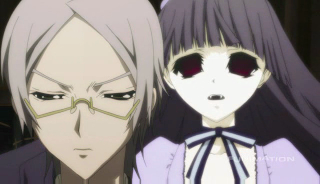
How do you feel watching Shiki? Do you feel sympathy for Sunako or merely want to see her meet the fate she deserves? Are you as disturbed by the shocking brutality of the human villagers as you were the sadistic harvesting of the village by the Shiki, pitting family against itself and sparing no one? Is there any redemptive quality to Seishin in your eyes, or does he disgust and repulse you? These are questions everyone who watches the series will have to answer for themselves. I suppose those answers will strongly influence your feelings about the way the show wrapped, pending the DVD special episodes. I applaud the series for challenging and provoking the audience, for making us think and driving us to anger and horrifying us. It was brilliant – a work of art and a dramatic masterpiece.




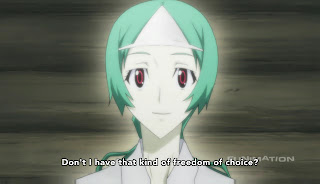

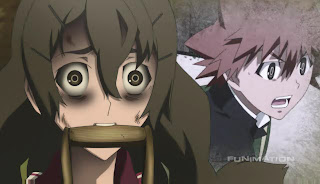
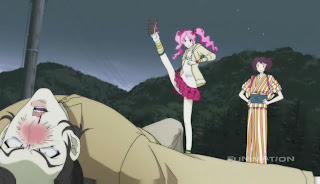
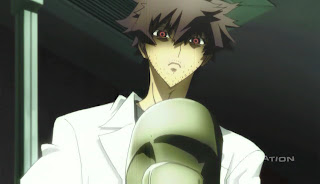
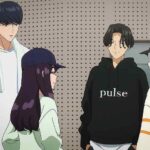
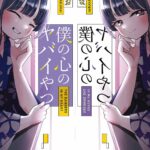
Soliloquy
August 8, 2011 at 12:40 pmI have to say after finishing this show, it was memorable and your review is excellent also agreeing on things you pointed out. As a person who believes in eye for an eye logic, yes, shiki had it coming. They started the whole thing first and the whole gang was too overconfident, I was looking forward to the finale.
admin
August 8, 2011 at 4:14 pmThanks for posting, Soliloquy. It is indeed a memorable show, and I hope you're watching the DVD extra eps.
Angel
May 15, 2019 at 1:00 amI’m still bitter about the ending but an excellent series and an excellent review.
Still can’t get what was the role of Masao? He was just annoying and that type you can do without.
Elia Notari
January 11, 2022 at 10:54 amThis is one of those series I’d love to hear again from you, maybe a second opinion after 11 years? Do you remember it vividly? Do you think time has changed you and some things can’t hold quite well nowadays with Shiki?
Guardian Enzo
January 11, 2022 at 12:19 pmI haven’t thought about Shiki that much and I’ve never re-watched it, but it holds up pretty well in my memory. In my mind probably my favorite anime vamp series, along with Mars Red.